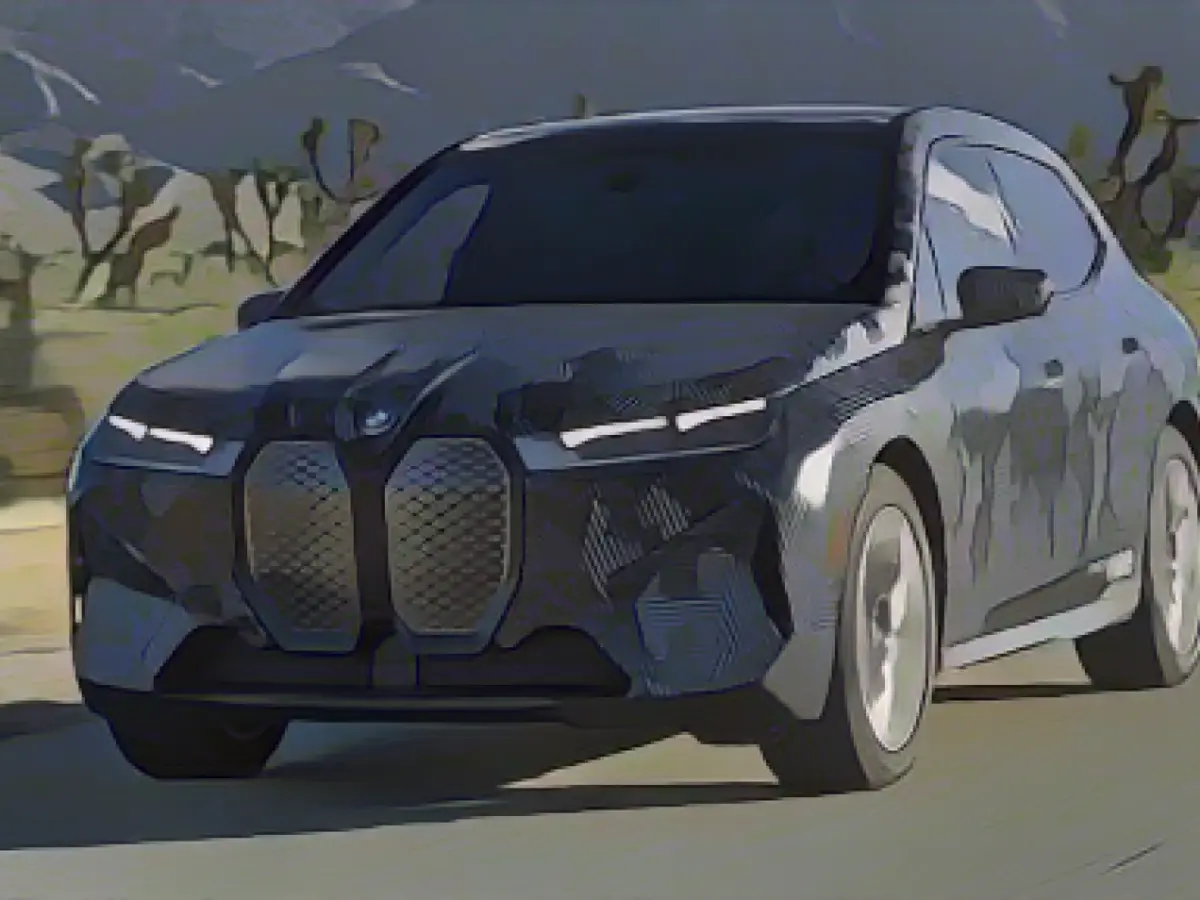Title: Revolutionizing Electric Vehicle Distance with BMW iX and Our Next Energy's Gemini Battery
Electric car battery technology has come a long way, thanks to advancements in battery exchange stations, fast chargers, and supermarket charging points. Yet, the fear of running out of juice before reaching your destination remains a significant concern, especially during colder weather. This is where BMW and Our Next Energy enter the picture, pushing the boundaries of electric vehicle (EV) mileage with their innovative Gemini battery.
A converted BMW iX recently managed an incredible 978.6 kilometers in WLTP-standard testing – albeit in controlled conditions. Real-world driving might yield around a third lesser due to weather influences, but that would still amount to an impressive 600+ kilometers. This significant range easily outstrips what many EVs can achieve.
The secret behind this achievement lies in the Gemini battery, Our Next Energy's revolutionary hybrid design. The battery sports two distinct cell types: an LFP (lithium iron phosphate) side responsible for supplying motor energy, delivering a range of 240 kilometers for 99% of everyday needs; and an anode-free side, boasting a high energy density, acting as a range extender. This pairing raises the total range by approximately 724 kilometers, all in a 300-400 liter space contending with the battery of a typical EV.
Our Next Energy prioritizes extended range and reduced raw material demand with the Gemini battery. It needs 20% less lithium and 60% less graphite while cutting down nickel and cobalt usage. Lower costs and fewer environmental pollutants result from such material economy. However, anode-free technology has its drawbacks. It boasts a shorter lifespan than LFP or regular lithium batteries and delivers less motor power. In response, the LFP side primarily provides energy, with the anode-free portion acting as a range booster only as necessary.
The spotlight was on Our Next Energy last year when they transformed a Tesla Model S, driving 1200 kilometers in chilly weather without needing to recharge. Yet, their technology tested under controlled circumstances could not break beyond this boundary at the time.
Our Next Energy aims to further optimize the Gemini battery for a 2024 market launch, with a strong focus on manganese-containing cathodes without cobalt. Continued development in anode-free technology will unlock the full potential of long-distance EV travel, overcoming range anxiety and opening new possibilities.
Sources: [ONE], [Autoline Network]
Additional Insights:
- As a growing concern, the EV industry is driven to invest in more sustainable and eco-friendly battery solutions. Startups like Our Next Energy contribute to this movement with innovative battery designs that decrease raw material requirements and help to establish a cleaner, greener future for transportation.
- A shift in battery technology also opens up opportunities to recycle materials, further reducing environmental impacts. As the automotive industry grapples with the challenges of waste disposal, this becomes a crucial consideration.
- LFP batteries are not only promising for higher ranges, but they also offer improved safety features, as LFP cells are chemically less likely to ignite than other types of battery cells.







